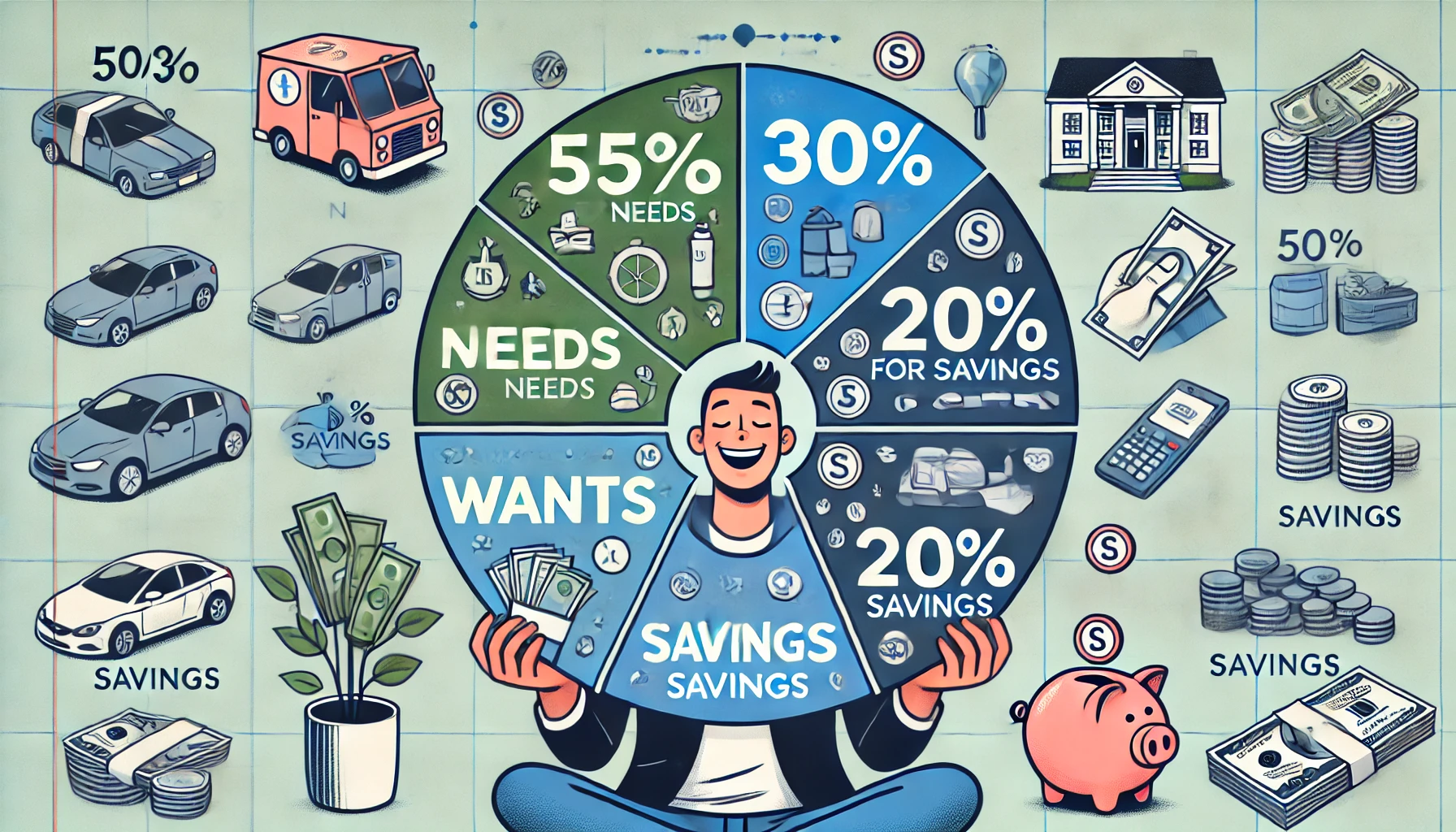Financial stability isn’t just about how much money you make—it’s about how well you manage what you have. Many people struggle with debt, financial stress, and uncertainty about the future simply because they don’t have a system to organize their money effectively.
The good news is that by adopting simple financial habits and planning strategies, you can avoid unnecessary debt, build savings, and create long-term stability—without feeling overwhelmed.
In this article, you’ll learn how to organize your money, stay out of debt, and ensure a financially secure future.
1. Track Your Income and Expenses to Gain Financial Clarity
Before you can organize your money, you need to understand exactly where it’s going. Tracking your income and expenses helps you identify wasteful spending, hidden costs, and opportunities to save more.
How to Apply It:
✅ List all your sources of income (salary, freelance work, passive income)
✅ Write down all your fixed and variable expenses
✅ Use a budgeting app, spreadsheet, or notebook to track transactions
📌 Example: If you earn $4,000 per month but can’t figure out why you’re always short on cash, tracking expenses might reveal that you’re spending $500 on dining out and subscriptions—money that could be redirected toward savings.
2. Use the 50/30/20 Rule to Structure Your Budget
One of the simplest ways to organize your money is the 50/30/20 budgeting method, which ensures you balance essentials, lifestyle, and savings.
✅ 50% for Needs – Rent, utilities, groceries, transportation, minimum debt payments
✅ 30% for Wants – Entertainment, dining out, shopping, hobbies
✅ 20% for Savings & Debt Repayment – Emergency fund, investments, extra loan payments
📌 Example: If you earn $3,500 per month, your budget could be:
- $1,750 (50%) for essentials
- $1,050 (30%) for wants
- $700 (20%) for savings and debt reduction
If you’re spending too much on non-essentials, adjust your budget to prioritize savings.
3. Build an Emergency Fund to Avoid Future Debt
One of the main reasons people fall into debt is because they aren’t financially prepared for unexpected expenses—car repairs, medical bills, or job loss. Having an emergency fund ensures you don’t have to rely on credit cards or loans in tough times.
How to Apply It:
✅ Start by saving at least $1,000 as a starter emergency fund
✅ Aim to save 3–6 months’ worth of living expenses over time
✅ Keep your emergency fund in a high-yield savings account for easy access
📌 Example: If your monthly expenses are $2,500, aim for an emergency fund of at least $7,500–$15,000 to cover 3–6 months.
4. Automate Your Savings and Bill Payments
Manually saving and paying bills increases the risk of forgetting payments, overspending, or not saving enough. Automating these financial tasks ensures consistency and discipline.
How to Apply It:
✅ Set up automatic transfers to your savings and investment accounts on payday
✅ Enable auto-pay for bills and loan payments to avoid late fees
✅ Keep separate accounts for bills, savings, and spending
📌 Example: If you get paid on the 1st, schedule an automatic transfer of $300 to savings and set up auto-pay for your rent and utilities on the 3rd.
5. Prioritize Debt Repayment to Free Up Future Income
Debt keeps you from achieving financial freedom because a portion of your income goes toward interest payments instead of savings or investments. The faster you eliminate debt, the sooner you can build wealth and reduce financial stress.
How to Apply It:
✅ List all your debts and their interest rates
✅ Choose a repayment strategy:
- Snowball Method – Pay off the smallest debt first for motivation
- Avalanche Method – Pay off the highest-interest debt first to save on interest
✅ Avoid taking on new debt unless absolutely necessary
📌 Example: If you have a $2,000 credit card debt at 18% interest, focus on paying it off aggressively before putting extra money into investments.
6. Set Up Sinking Funds for Big Future Expenses
Instead of being caught off guard by big expenses like vacations, car maintenance, or holiday shopping, plan ahead by creating sinking funds—small savings accounts dedicated to specific future costs.
How to Apply It:
✅ Identify major upcoming expenses (travel, home repairs, annual fees)
✅ Divide the total cost into monthly savings goals
✅ Keep sinking funds in a separate account from your emergency fund
📌 Example: If you want to take a $2,400 vacation in 12 months, save $200 per month in a dedicated travel fund so you don’t have to use a credit card.
7. Limit Credit Card Use and Spend Within Your Means
Credit cards can be useful, but they also make it easy to overspend and fall into debt. Using them wisely helps you maintain financial stability.
How to Apply It:
✅ Use credit cards only for planned purchases, not impulse buys
✅ Pay off the full balance every month to avoid interest
✅ Keep your credit utilization below 30% to maintain a good credit score
📌 Example: If your credit card limit is $5,000, keep your balance under $1,500 to maintain a strong credit score.
8. Review Your Finances Monthly and Make Adjustments
Your financial situation changes over time, so regularly reviewing your budget helps you stay on track and make necessary adjustments.
How to Apply It:
✅ Set a monthly money check-in to review your budget and spending
✅ Adjust savings goals or expense categories as needed
✅ Identify areas where you can cut costs or increase savings
📌 Example: If you consistently overspend on dining out, adjust your budget by cutting back and redirecting that money toward savings.
9. Focus on Increasing Your Income Over Time
While cutting expenses is important, increasing your income can help you achieve financial stability and reach your goals faster.
How to Apply It:
✅ Look for ways to increase your salary through career growth or skills development
✅ Start a side hustle or freelance work to create additional income streams
✅ Invest in assets that generate passive income (stocks, rental properties, digital products)
📌 Example: If you earn an extra $500 per month from a side hustle and invest it wisely, you can grow your wealth faster without changing your lifestyle.
10. Plan for Long-Term Financial Security (Retirement & Investments)
To ensure a stable financial future, you must start investing for retirement and long-term wealth-building as early as possible.
How to Apply It:
✅ Contribute to a retirement account (401(k), IRA, or equivalent)
✅ Diversify investments to grow wealth over time
✅ Plan for long-term financial goals like buying a home or early retirement
📌 Example: If you invest $300 per month in a retirement fund starting at age 25, you could have over $1 million by retirement, thanks to compound interest.
Final Thought: A Well-Organized Financial Plan Leads to Freedom
By organizing your money with intentional budgeting, saving, and debt management, you will:
✅ Avoid unnecessary debt and financial stress
✅ Build financial stability and security for the future
✅ Achieve long-term financial freedom while still enjoying life
Start today: Choose one financial habit from this list and commit to applying it this month! 🚀












Leave a Reply